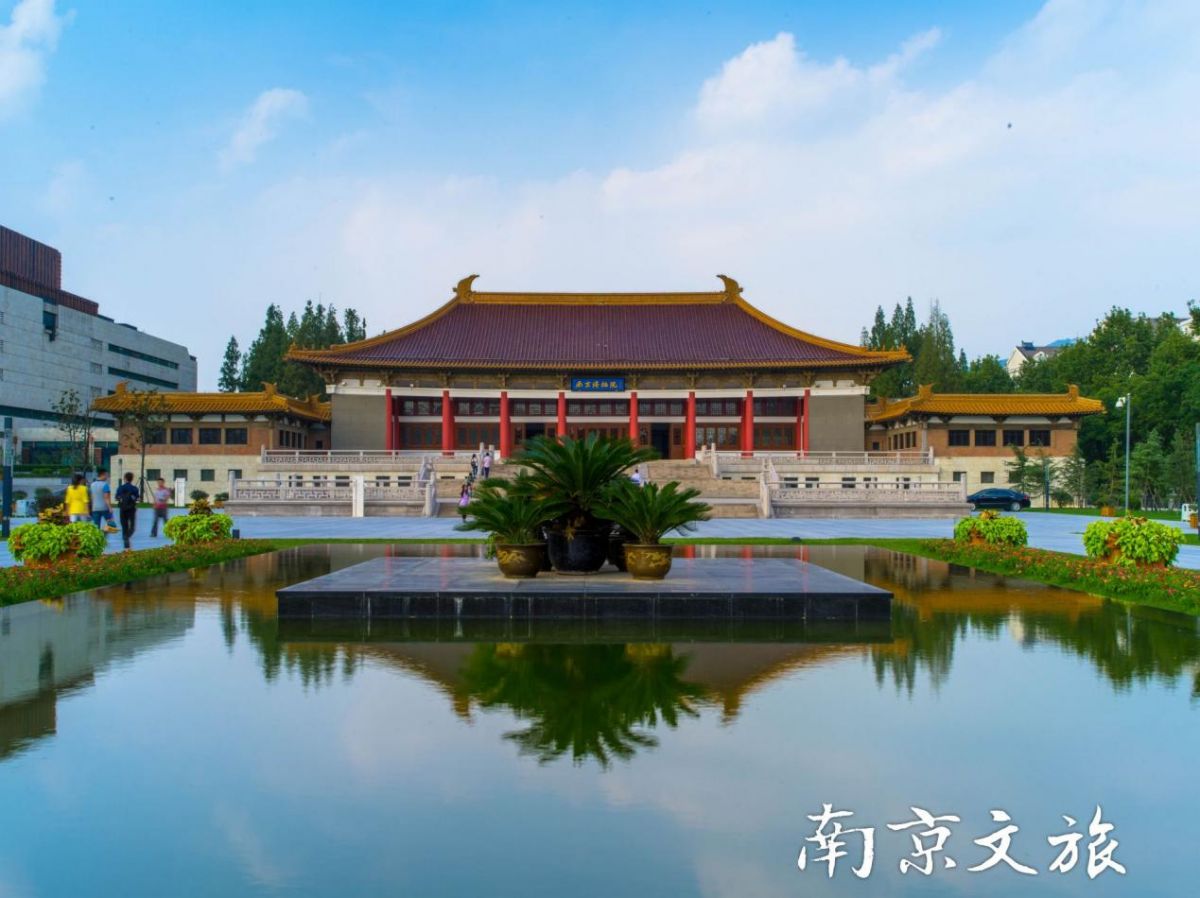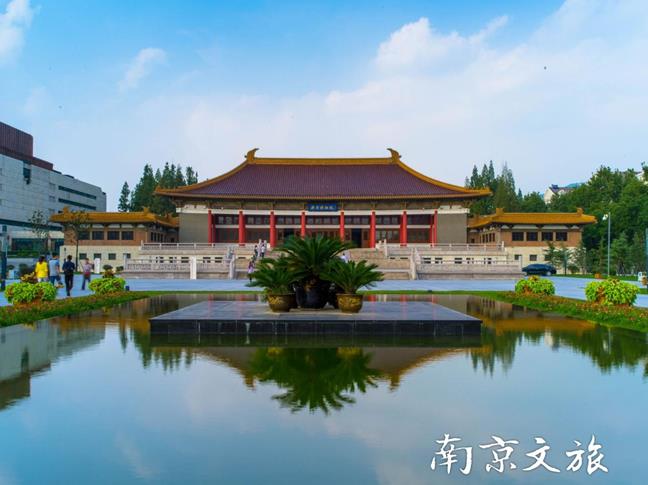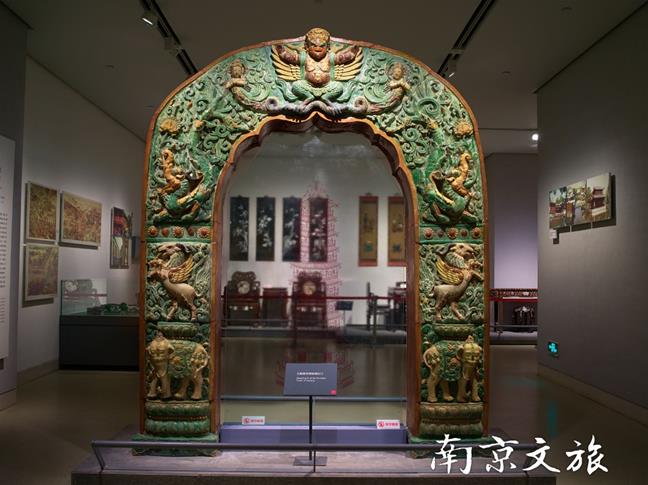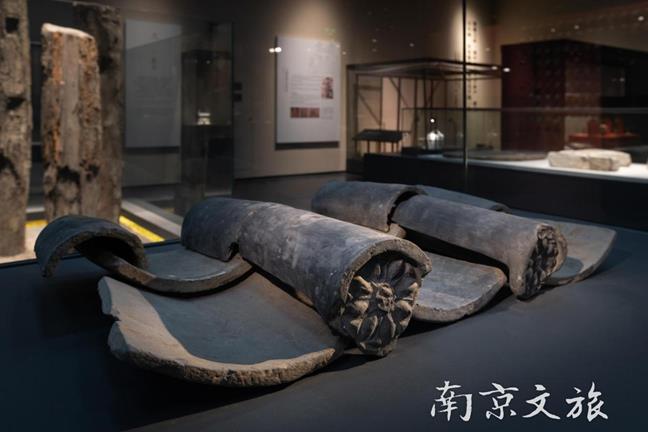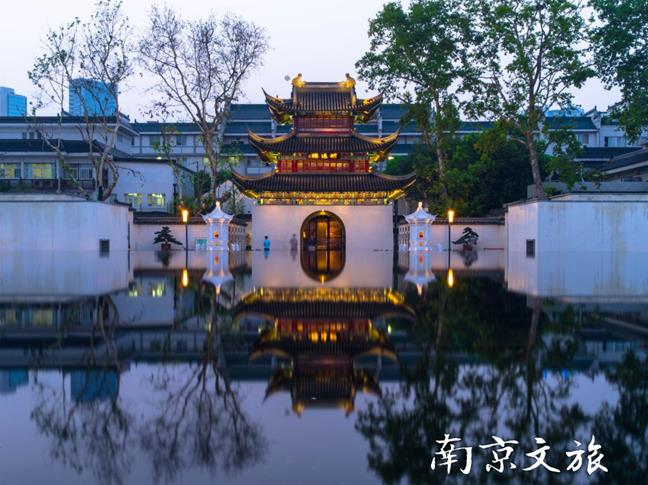Летом встречаться с Нанкином и рассказывать истории
(Рис.: Нанкинский музей; источник: Культурный туризм Нанкина)
Жарким летом лучший способ открытия Нанкина – это экскурсия в помещении. А самый быстрый способ узнавания Нанкина - посещать Нанкинский музей, храм Баоэнь, Китайский музей государственных экзаменов в Нанкине и другие исторические здания и музеи, чтобы искать тени времени, оставленные на пятнистых древних стенах, и дегустировать знаки, разбросанные на различных зданиях, утварях, фарфорах, печатях, каллиграфиях и живописях, как «путешествовать во времени», внимательно слушать истории Нанкина и встречаться с ним.
(Рис.: специальная выставка в Нанкинском музее –великолепие эпохи процветания; источник: Культурный туризм Нанкина)
Как древняя столица шести династий, В Нанкине есть не только здания в период Китайской Республики, но и достопримечательности в эпоху Южных династий. Если вы хотите слушать истории Нанкина, не должны пропустить эти места.
Рекомендация 1: Нанкинский музей
Нанкинский музей - один из трех основных музеев и первым музеем в Китае. Этот музей огромного масштаба состоит из шести павильонов: Павильон истории, Павильон искусства, Специальный выставочный павильон, Цифровой павильон, Павильон Китайской Республики и Павильон духовного наследия.
Самым ядерным в Нанкинском музее является Главный павильон (Павильон истории) в центре музея. Его здание было спроектировано известным архитектором Сюй Цзинчжи и модифицировано мастером-архитектором Лян Сычэном, с широким размахом, резными балками и расписными стропилами, которые в высшей степени выражают красоту дворцовой архитектуры и разные великолепия Цзянсу. Здесь можно ощущать культурные реликвии, которые преодолевают несколько тысяч лет и имеют значение тяжелой китайской культуры. В Специальном выставочном павильоне слева от Павильона истории часто выставляются лучшие сокровища и бывают различные характерные тематические выставки, такие как выставка бронзовых статуй Будды, изделий казенных гончарных мастерских в Кайфыне трех эпох, разнообразных императорских великолепных убранств и часов династии Цин. В Павильоне искусства экспонируются каллиграфия и картины прошлых эпох, которые рассказывают сокращенную историю китайской цивилизации. Павильон Китайской Республики - популярный и характерный выставочный павильон в Нанкинском музее, который в значительной степени восстанавливает здания, городские пейзажи и жизнь в период Китайской Республики, где людям кажется возвращаться в прошлое во сне. Цифровой павильон и Павильон духовного наследия - это два подземных выставочных павильона, где демонстрируются истории, основанные на духовном наследии и различных звуковых и оптоэлектронных технологиях.
(Рис.: глазурованная арка в Нанкинском музее; источник: Культурный туризм Нанкина)
Адрес: провинция Цзянсу, город Нанкин, район Сюаньу, ул. Чжуншаньдунлу, № 321
Билет: бесплатно; при наличии действительного сертификата (удостоверение личности, домовая книга, студенческий билет, карточка медицинского страхования и т.д.) можно получить бесплатный билет на месте. Либо бронировать бесплатный билет на официальном сайте, а затем получать билет на месте.
Время работы: 09:00-17:00, остановка приема туристов в 16:00; закрывается по понедельнику, но открывается весь день в случае, если понедельник является официально установленным праздничным и выходным днем; в канун Нового года и Новый год по лунному календарю закрывается.
Автобусы и метро: можно добраться на автобусах № 5, 9, 34, 36, 55, туристических автобусах № 1, 2, 5 до остановки «Ворота Чжуншань»; выход №1 станции «Дворец Мин» 2-й линии метро, идти пешком 600 м до Нанкинского музея.
Рекомендация 2: Музей древней столицы шести династий
Музей древней столицы шести династий - тематический музей, посвященный показанию истории «Древней столицы шести династий» Нанкина, где в основном экспонируются археологические находки и памятники культуры Нанкина в эпохах троецарствия, обеих династий Цзинь, Южных и Северных династий. Он был построен на руинах бывшего города Цзянькан во времена Шести династий, спроектирован Архитектурным бюро Бэйши США во главе Бэй Цзяньчжун – сына всемирно известного архитектора Бэй Юймин. Здесь есть четыре выставочных павильона - «Столица империи Шести династий», «Изящество Шести династий», «Известные люди Шести династий» и «Оглядка назад на Шесть династий», с потрясающей расстановкой с гибким использованием света и тени древнего очарования. Используя дизайн в стиле садов Сучжоу, при демонстрации культурных реликвий уделяется внимание ширмам и перегородкам, путем белой ткани в качестве бумаги, а теней от бамбука – картины, и т.д. Пейзаж изменяется с движением шагов, а каждая вещь полностью высказывает великолепие триста лет и заставляет нас чувствовать себя в прошлом.
Теперь здесь мало туристов, т.е. это хорошее тихое и спокойное место летом, где можно отвлекаться от шума, прогуливаться и делать что-то в свое удовольствие.
(Рис.: Музей древней столицы шести династий - желобчатая черепица, плиточная черепица и круглая черепица; источник: Культурный туризм Нанкина)
Адрес: провинция Цзянсу, город Нанкин, район Сюаньу, ул. Чанцзян, №302
Билет: 30 юаней / чел.
Время работы: 09:00-18:00, закрывается по понедельнику, но открывается в случае, если понедельник является официально установленным праздничным и выходным днем.
Автобусы и метро: остановка «Дворец президента» автобусов № 201, 202, 29, 44, 95, 65, 304; станция «Дасингун» 2-й линии метро (выход №3);
Рекомендация 3: Китайский музей государственных экзаменов
Китайский музей государственных экзаменов был реконструирован и расширен из Экзаменационного зала Цзяннань. Это самый большой имперский экзаменационный зал в Китае, и первый из экзаменационных залов во всех провинциях страны по масштабу и занимаемой площади, т.е. устанавливает рекорд в древних имперских экзаменационных залах в Китае. Китайский музей государственных экзаменов состоит из трех частей: главного павильона, Наньюань Экзаменационного зала Цзяннань и руин башни Минъ-юань. Всего четыре этажа, и все находятся под землей. В музее рассказывается об эволюции государственных экзаменов в императорском Китае и экспонируется множество экзаменационных работ на бывших имперских экзаменах, почерки в которых аккуратно оформлены и упорядочены, как если бы они были напечатаны. Здесь есть массовые характерные стены из черепиц и имитаций бамбуковых дощечек, также можно на месте испытывать опыт студентов, сдающих имперские экзамены, и ощущать трудности пути имперского экзамена в то время.
(Рис.: Музей государственных экзаменов в Нанкине; источник: Культурный туризм Нанкина)
Адрес: провинция Цзянсу, город Нанкин, район Циньхуай, улица Цзиньлинлу, №1
Билет: 50 юаней / чел.
Время работы: 09:00-22:00
Метро и автобусы: Выход № 2 станции «Храм Конфуция» 3-й линии метро - улица Пинцзянфулу, или делать высадку в станции «Улица Саньшань» 1-й линии метро; остановки «Храм Конфуция» или «Улица Чжанлэлу» автобусов № 1, 2, 202, 4, 7, 14, 31, 40, 33, 44, 49, 81, 87.
Рекомендация 4: живописное место развалин храма Баоэнь
Храм Баоэнь - исторически древнейший буддийский храм в Китае, который был построен в 238–250 годах н.э, вторым храмом в Китае после храма Белой Лошади в Лояне, перестроен императором Юнлэ династии Мин (Чжу Ди) и лучшим в Китае храмом в то время. В 2008 году из развалин подземного дворца храма Баоэнь были выкопаны такие ценные памятники культуры, как «фрагменты теменной кости Шакьямуни» и пагода Ашоки. Нынешний храм был перестроен, также создан и открыт в 2015 году.
Статуи Будды в храме Баоэнь очень красивы. Изображения Будды прекрасны, с пухлыми щеками и спокойными, смелыми обликами, т.е. невозмутимы. А недавно построенная поливенная пагода под ночным освещением показывает сказочный поливенный свет Будды. Также ночью можно смотреть представление в реальном пейзаже «Торжественная церемония Баоэнь», что с точки зрения молодого монаха рассказывается о том, что он под руководством колокольцев на стрехах храма путешествует в 3 разных временах - династии Мин, династии Тан и древней Индии, лично переживает 3 чудесных жизни: императора Юнлэ, буддийского монаха Сюаньцзан и Будды Шакьямуни, чтобы выражалось добро родителей, родной земли и всех живых существ. Сценический эффект потрясающий, а рассказы благодарные, словно перемещаться во временах вместе с этим молодым монахом.
(Рис.: храм Баоэнь; источник: Культурный туризм Нанкина)
Адрес: провинция Цзянсу, город Нанкин, район Циньхуай, за воротами Чжунхуа, улица Юйхуалу, №1, храм Баоэнь
Билет: 80 юаней/чел. для взрослого. Билет на представление «Торжественная церемония Баоэнь»: 140 юаней/чел. (опция)
Время работы: 09:00-17:30. Время представления: 19:30
Автобус: остановка «Парк развалин храма Баоэнь (храм Цзяньчу)» автобуса № D18
Город, история, музеи, древние здания и памятники культуры различным образом демонстрируют истории Нанкина. Следуя за ними, преодолевать несколько тысяч лет и ощущать эту блестящую и древнюю столицу шести династий, немало пережившую на своем веку, также его крепкой и тяжелой китайской культурой приносить прохладу суховейному лету.

